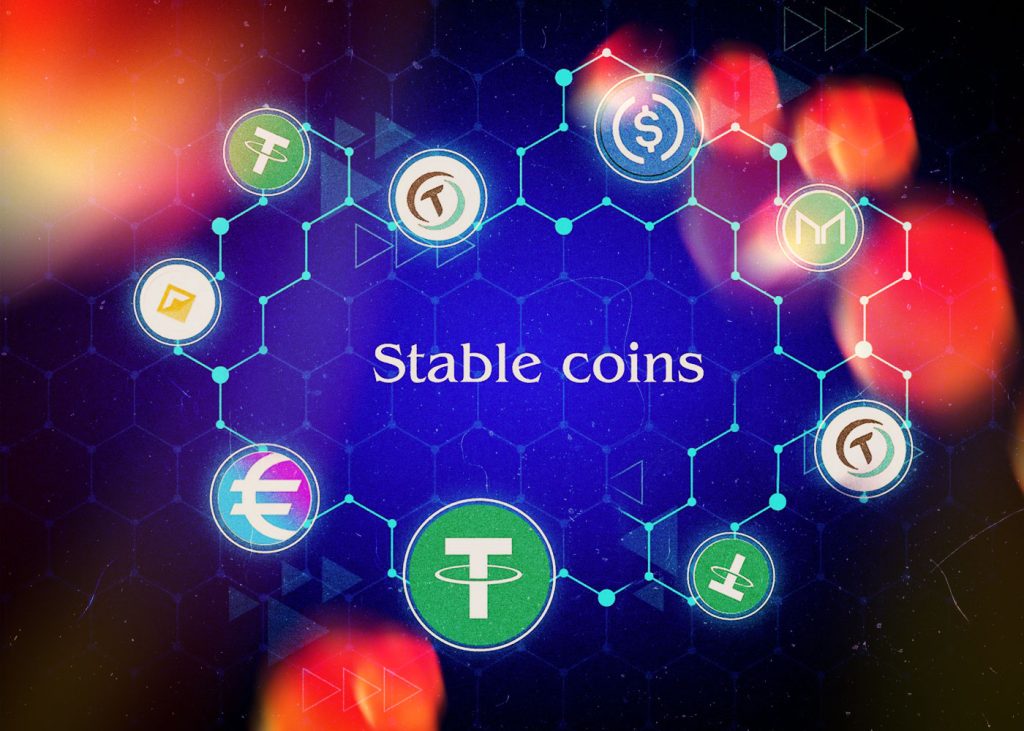Creating a successful stablecoin requires careful planning and diligent execution. Stablecoins offer numerous advantages to their users: they are designed to remain price-stable, meaning holders can trust their assets more than other digital currencies whose values fluctuate quickly and without warning. Creating an effective stablecoin is integral for those who wish to benefit from its stability. In this blog post, we will discuss the various steps involved in developing and launching a successful stablecoin – down to every detail; first defining the core elements that go into creating a robust cryptocurrency offering, then outlining how it should be launched on public blockchains. For readers interested in learning how to create a stablecoin, read on!
What Is A Stablecoin?
A stablecoin is a cryptocurrency designed to maintain a stable value for a particular asset or group. It either pegs the value of a stablecoin to a stable support such as fiat currency such as the US dollar, gold, or other commodities or uses algorithms to regulate the stablecoin supply and maintain a regular price.
Stablecoins are designed to minimize the volatility common to other cryptocurrencies and can experience significant price swings in short periods. By providing a stable store of value, stablecoins can be used for various purposes, such as a means of payment, a store of value, or as a trading pair for cryptocurrency exchanges.
There are different types of stablecoins, including fiat-backed stablecoins, commodity-backed stablecoins, algorithmic stablecoins, and hybrid stablecoins. Every kind of stablecoin has its characteristics and mechanisms to maintain price stability.

How To Create a Stablecoin?
Creating a stablecoin involves designing a cryptocurrency pegged to a stable asset such as fiat currency, gold, or other commodities to minimize price volatility. Here are some steps to consider when creating a stablecoin.
- Decide what type of stablecoin you want to create, e.g., fiat, commodity, algorithmic, etc.).
- Determine the stable asset that your stablecoin will be associated with.
- Choose a blockchain platform to build your stablecoin on (e.g., Ethereum, Binance Smart Chain, etc.).
- Develop a smart contract for your stablecoin that governs the pegging mechanism and other functions—thoroughly tested and audited to ensure the stability and security of our stablecoins.
- Launch your stablecoin and promote it to potential users and investors.
Let’s take a closer look at these steps.
- Decide what kind of stablecoin you want to create.
There are different types of stablecoins, each with its characteristics and mechanisms to maintain price stability. For example, fiat-backed stablecoins are pegged to fiat currencies such as the US dollar, and commodity-backed stablecoins are pegged to commodities such as gold. Algorithmic stablecoins, conversely, use complex algorithms to regulate the supply of stablecoins to maintain a stable price.
- Determine the stable asset your stablecoin will be associated with.
Once you have decided on the type of stablecoin you want to create, you need to decide which stable assets you wish to associate with that stablecoin. This can be fiat currency, commodities, or even a basket of assets.
- Choose a blockchain platform to build your stablecoin on.
You need to choose a blockchain platform on which to build your stablecoin. Several options are available such as Ethereum, Binance Smart Chain, etc.
- Develop intelligent contracts for stablecoins.
Smart contracts are the heart of any stablecoin, governing the pegging mechanism and other functions. You must hire an experienced blockchain developer to develop robust, secure smart contracts.
- Thoroughly test and audit.
Thorough testing and auditing of stablecoins are critical to ensure stability and security. This helps identify and fix potential issues before the stablecoin goes live.
- Launch the stablecoin.
After completing all the above steps, you can launch your stablecoin and promote it to potential users and investors. Stablecoins must be marketed effectively to attract users and build a strong community. Creating a stablecoin can be a complex process requiring considerable technical expertise and funding. Before embarking on this venture, working with experienced professionals and conducting thorough research is essential.
Let’s Sum It Up
There you have it; now you know how to create a stablecoin. The market of stablecoins is ever-changing, and if you want to create your own, you must do thorough research. The elements needed may change over time, and depending on the use case for the coin, specific components such as governance may or may not be necessary. When creating or utilizing a stablecoin, it’s important to consider who manages the currency and how often audit processes are in place. Understanding smart contracts and their interaction with Ethereum is also integral, as most stablecoins live on an Ethereum layer. There is no one way to create a stablecoin as different use cases and resources can affect which protocols are used, but there are steps that should be taken regardless when establishing a secure token launch. Doing your research and ensuring that all crucial factors have been considered will help create greater confidence in the coin’s ecosystem users while providing liquidity to their portfolio. No matter which stablecoin protocol you choose, do your research before launching or getting involved!
